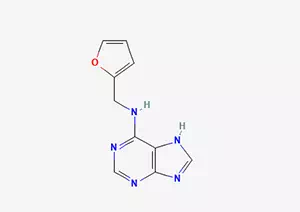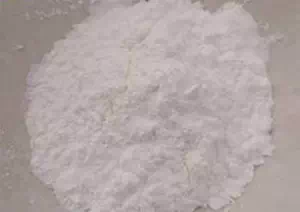All Categories



Kinetin CAS 525-79-1 6-Furfurylaminopurine, Kinetin, CAS 525-79-1, 6-Furfurylaminopurine
Agonist (CAS 525-79-1) is the first discovered synthetic cytokinin. Its core values include:Strong biological activity: The core mechanism of delaying aging and promoting differentiation is irreplaceable in agricultural preservation and increased production.
CAS : 525-79-1
Formula : C10H9N5O
Mol. wt. : 215.21
EINECS : 208-382-2
| CAS | 525-79-1 |
| Molecular formula | C10H9N5O |
| Molecular weight | 215.21 |
| EIENCS | 208-382-2 |
| Form | crystalline |
| Melting point | 269-271 °C (dec.)(lit.) |
| boling point | 355.49°C (rough estimate) |
| Density | 1.2639 (rough estimate) |
| Solubility | H2O: soluble |
| PKA | / |
| Color | / |
| Storage temp |
Agonist (CAS 525-79-1) is the first discovered synthetic cytokinin. Its core values include:
Strong biological activity: The core mechanism of delaying aging and promoting differentiation is irreplaceable in agricultural preservation and increased production.
Low toxicity but require protection: Avoid inhalation of dust and skin contact, especially pay attention to aquatic toxicity.
Application scenario differentiation: In the scientific research/medical field, high purity (≥99.5%) is pursued, while in agriculture, cost-effectiveness is emphasized (industrial grade 99%).
Plant growth regulation
Cytokinin function:
Promote cell division and tissue differentiation, and induce callus to sprout;
Delay leaf senescence (such as spraying 10-20 mg/L to preserve cauliflower and celery);
Break seed dormancy and increase fruit setting rate (for apples and citrus fruits, spray 600 to 1000 times diluted solution).
Agricultural Practice
Spraying during the tillering stage of rice and the jointing stage of wheat can increase production.
The growth of cotton is regulated at the 4 to 6 leaf stage (due to high cost, benzylaminopine is replaced in some scenarios).
Scientific research and Industry
Tissue culture: Used in combination with auxin to induce differentiation of plant organs;
Biochemical reagents: used for protein/nucleic acid labeling and anti-aging research.
Health risk
Toxicity grade: Low toxicity (oral LD₅₀ > 5000 mg/kg in rats), but long-term exposure may cause dermatitis or respiratory tract irritation.
Irritation: Corrosive to skin and eyes (R36/37/38). Dust masks, goggles and corrosion-resistant gloves should be worn during operation.
Environmental risk
Aquatic toxicity: Highly toxic to fish (LC₅₀ > 100 μg/L). Discharge into water bodies is prohibited.
* Prompt reply and 24 hours online, professional team to provide best price and high quality product.
* Sample testing support.
* Every batch of products will be tested to ensureits quality.
*The packing also can be according the customers` requirment.
*Any inquiries will be replied within 24 hours.
*we provide Commerical Invoice, Packing List, Bill of loading, COA , Health certificate and Origin certificate. If your markets have any special requirements, let us know.